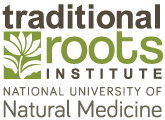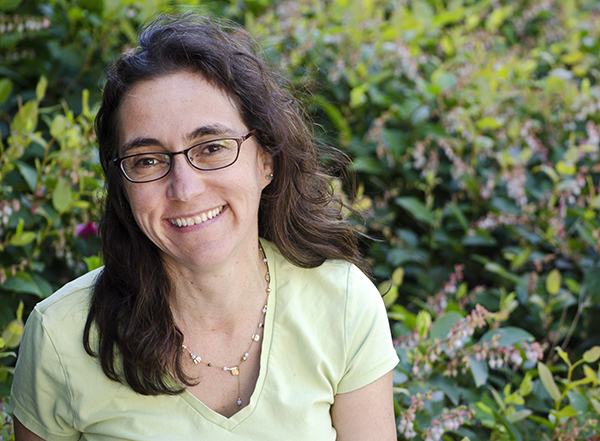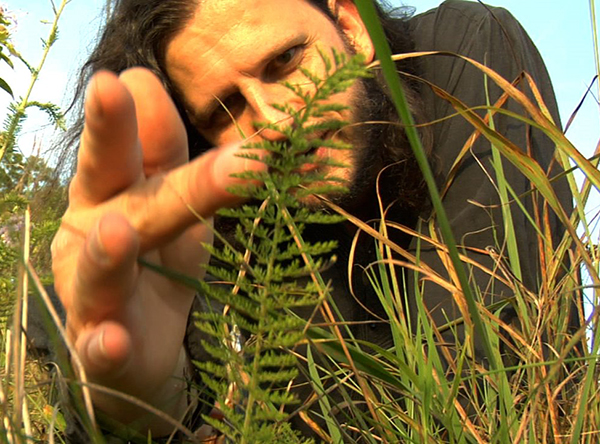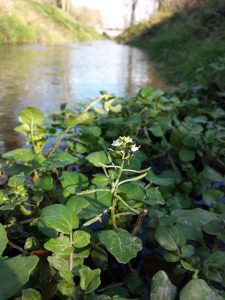
By Amelia R. Cohn
Naturtium officinale, commonly known known as watercress, is is one of the oldest known salad greens consumed by humans, sharing the Brassicaceae family with collards, kale and broccoli.
This semi-aquatic plant is high in many vitamins and minerals. It contains heart-rate and blood-pressure regulating potassium as well as the B-complex vitamins that are crucial for the production of ATP, the molecule that powers every cellular process in our bodies.1 Eating 100g of watercress will give you 72 percent of your recommended daily allowance (RDA) of Vitamin C and 200 percent of your RDA for Vitamin K,1 which is a key player in the cascade of enzymes that create blood clots when we have an open wound.
New research suggests Vitamin K also plays a crucial role as a nervous system protectant by reducing oxidative stress in the brain.2
To understand oxidative stress, we have to look at free radicals. Back to Chemistry 101, remember that atoms like to have a full outer shell, or valence shell of electrons. When an atom doesn’t have a full shell, it will take one of three actions; pair with another atom to share electrons, give them away, or steal them. Free radicals want electrons. They will bounce around the body, stealing electrons to fill their outer shells, damaging our cells and DNA in their hunt for electromagnetic stability. Simply put, oxidative stress happens when free radicals overwhelm the body’s capacity to deal with them. It is thought to be a contributing factor in many disease processes so eating nutrients that prevent it keep us healthy and thriving.
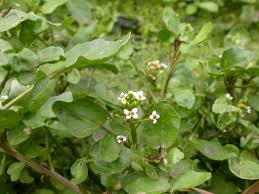
I first met watercress during the dark days of Oregon’s rainy winter. I recall the hunt, the harvest and the feast with one of the first wild greens available as winter slowly fades to spring. My friend introduced me to this delightful herb, which grows on the far side of her farm. We walked along a narrow forest path and crossed the nearby creek a few times to get to the watercress patch. A murder of crows partially hidden by the fog, sat in the bare branches of chestnut trees, cawing as we passed. In our waterproof boots, we waded through a wide, quiet stream, partially hidden by long grass to get to the watercress. We brought with us scissors and a basket for carrying our harvest back to the house.
Hollow stems keep the pinnately compounded leaves above water, while tangled roots sink lightly into the muddy creek bed. We cut the watercress just below water level, rinsed it quickly and placed it in our basket. When we picked enough, we returned to the old farm house to make pesto for our fresh baked bread. Below you will find the recipe we used for watercress pesto.
If you can’t forage your own watercress right away, you often can find it at a local farmers markets. The sprouts are great too, and the nutritional value of this herb is well worth the hunt to find it.
Watercress Pesto
Ingredients:
- ¾ cup packed watercress leaves
- 3 tablespoons pine nuts
- 1 garlic clove
- ¾ teaspoon lemon juice
- ¼ teaspoon sea salt
- 3 tablespoons extra virgin olive oil
Preparation:
- Wash watercress well by soaking in clean water then rinsing thoroughly.
- Toast the pine nuts over medium heat in a skillet for about five minutes.
- Add all the ingredients except the oil to a blender or food processor and blend while slowly adding the olive oil.
- Add 4 Tablespoons of Parmesan cheese if desired.
- Blend until smooth.
- Enjoy over bread or as a sauce with pasta.
References
- Mangajji U. Watercress nutrition facts and health benefits. https://www.nutrition-and-you.com/watercress.html. Published 2018. Accessed February 25, 2018.
- Josey BJ, Inks ES, Wen X, Chou CJ. Structure–Activity Relationship Study of Vitamin K Derivatives Yields Highly Potent Neuroprotective Agents. J Med Chem. 2013;56(3):1007-1022. doi:10.1021/jm301485d.

Amelia R. Cohn is a student of naturopathic medicine at National University of Natural Medicine. Her interest in plants started in 2004 with an assignment to identify forage crops growing in her horse’s pasture. The promise of botanical wisdom inspires her to keep exploring.
